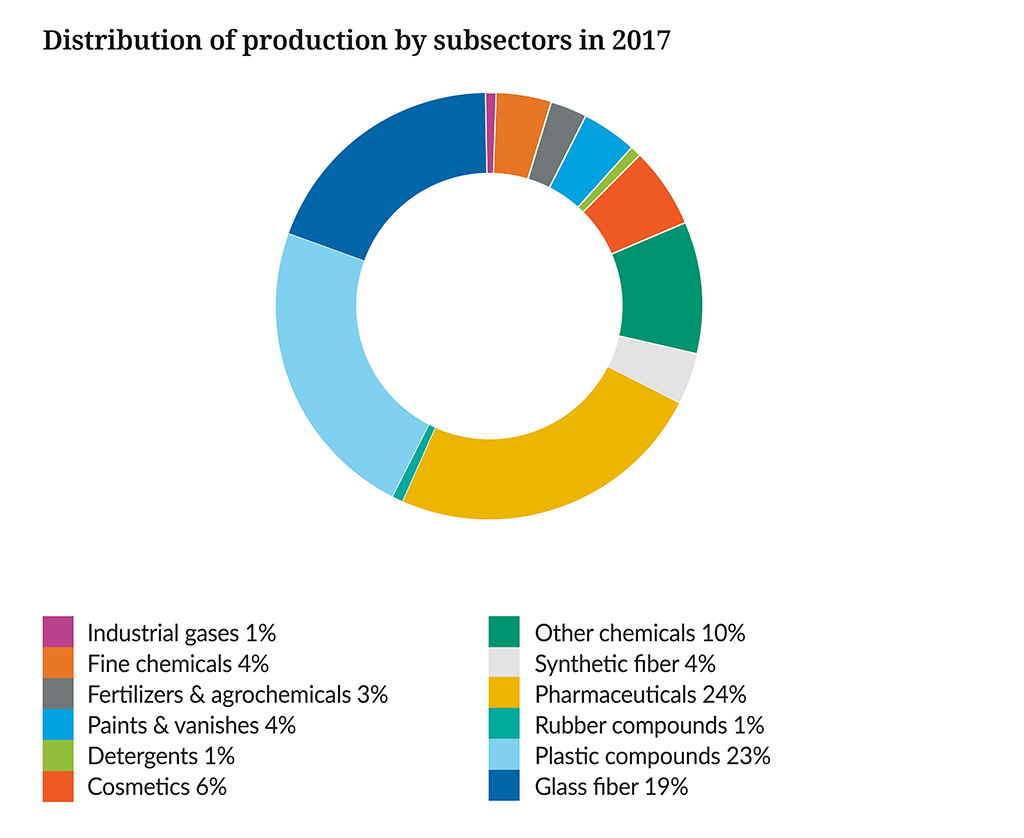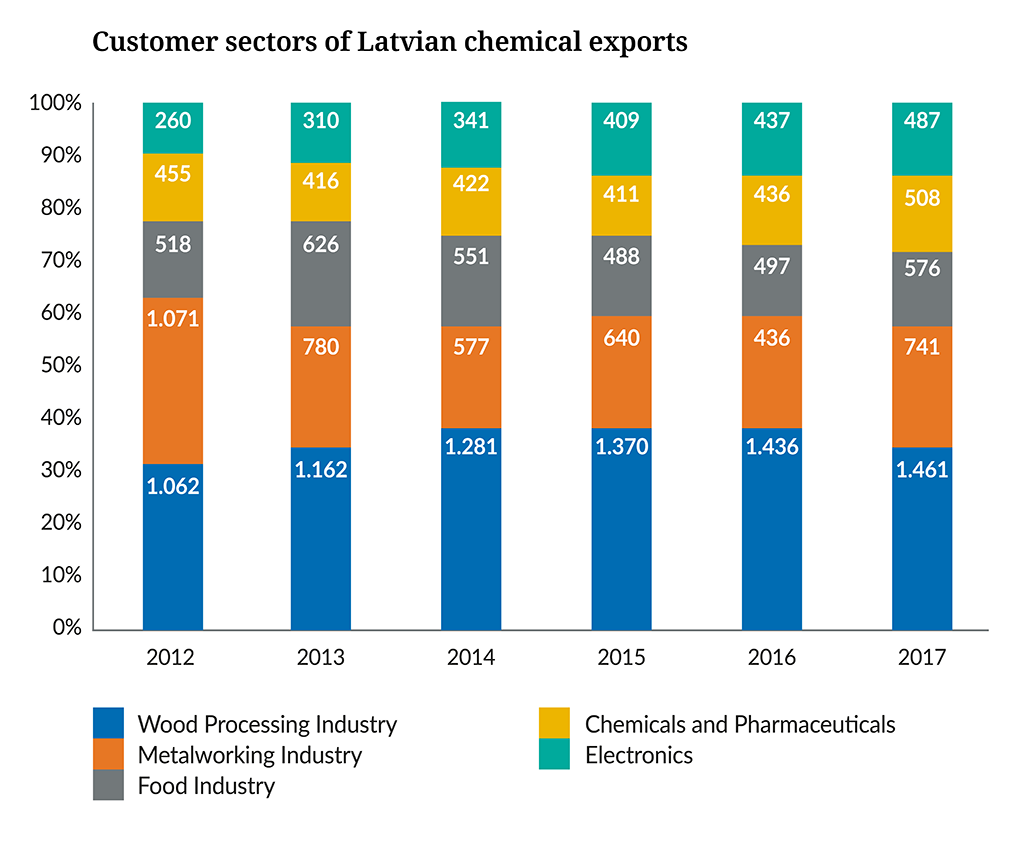Latvia
Key facts
Turn over
€770 million
Number of companies
530
Direct and indirect employees
9,700
National contact
Association of the Latvian Chemical and Pharmaceutical Industry (LAKIFA)

Zanda Jurjane
Executive Director
lakifa@lakifa.lv
CHEMICAL INDUSTRY SNAPSHOT
Building on historic strengths
With sales of €770 million in 20219, the chemical and pharmaceutical industries are a longstanding cornerstone of the Latvian economy. The historic commitment to a strong research, development, and manufacturing base in sophisticated chemical and pharmaceutical products was reaffirmed when the government made it a priority sector in 2019. Chemical and pharmaceutical companies have always been the added value of Latvian products, due to their scientific achievements and the ability of entrepreneurs to turn ideas into competitive products.
Rooted in research
Chemicals and pharmaceuticals account for 10% of the manufacturing industry by turnover. These industries ranked fourth largest industry in Latvia, exporting 75% of their output. Experience and traditions, skills, efficiency and R&D capacity underpin an ongoing development of the chemical, pharmaceutical and biotechnological sector.
HOW ARE WE DOING?

An important employer
Latvia’s chemical industry had around 530 companies in 2021; all but a handful were SMEs. Employment in chemicals and pharmaceuticals is stable at 5,500 people, and another 3,500 work in the plastics and rubber compounds subsector and the glass fiber industry. The industry comes in second place when comparing the average salary level with all sectors of the Latvian economy. This implies both high tax payments to the state budget and a higher rate for the Latvian economy as a whole.
Leading with exports
Latvia produces and exports a diverse range of pharmaceuticals and chemical goods, from unique anti-cancer medicine to fine chemicals, paints, household chemicals and cosmetics.
Latvia exports worldwide, but the core export markets are the Baltic neighbours Lithuania, Estonia and the Confederation of Independent States (CIS) followed by Denmark, Germany, Sweden, and the Netherlands.

Backed by education and skills
Seven higher education institutions and professional schools collaborate closely with the industry to educate and provide young people with the skills needed for industry.
PREPARING THE FUTURE
Strengths
- Skilled, flexible and relatively cheap workforce
- High added-value products
- Broad international cooperation between exporting enterprises
- Positive attitude: the industry is a priority sector for economic development
- Modern, flexible plants meeting EU standards
- Strong research capacity
Weaknesses
- Reliance on imported raw material
- Government creates pressure to increase taxes and fees
- Limited industry resources to invest in business development
- Demand for new production technologies (except pharmaceuticals)
- Brain drain: able scientists often move abroad
- Reluctance of research institutions to undertake relevant research Ageing workforce
- Skills gaps
OUR CONTRIBUTION TO A COMPETITIVE EUROPE
To reinforce R&D investment, the Latvian government and Education and Science Ministry will support 9National Level Research Centres (NLRC) including centres dedicated to pharmacy and bio-medicine, food processing technologies, nano-structured and multifunctional materials, structural and construction technologies and public health and clinical medicine. Latvian Contract Research Organization (CRO) activities are also gaining recognition.
Clustering to compete globally, The Life Sciences Cluster of Latvia comprises more than 30 pharmaceutical, chemical, and biotechnology companies, as well as educational and research institutions, skilled in organic chemistry and biopolymer research, microbiology and virology, genomics, immunology, biotechnology, and wood chemistry.